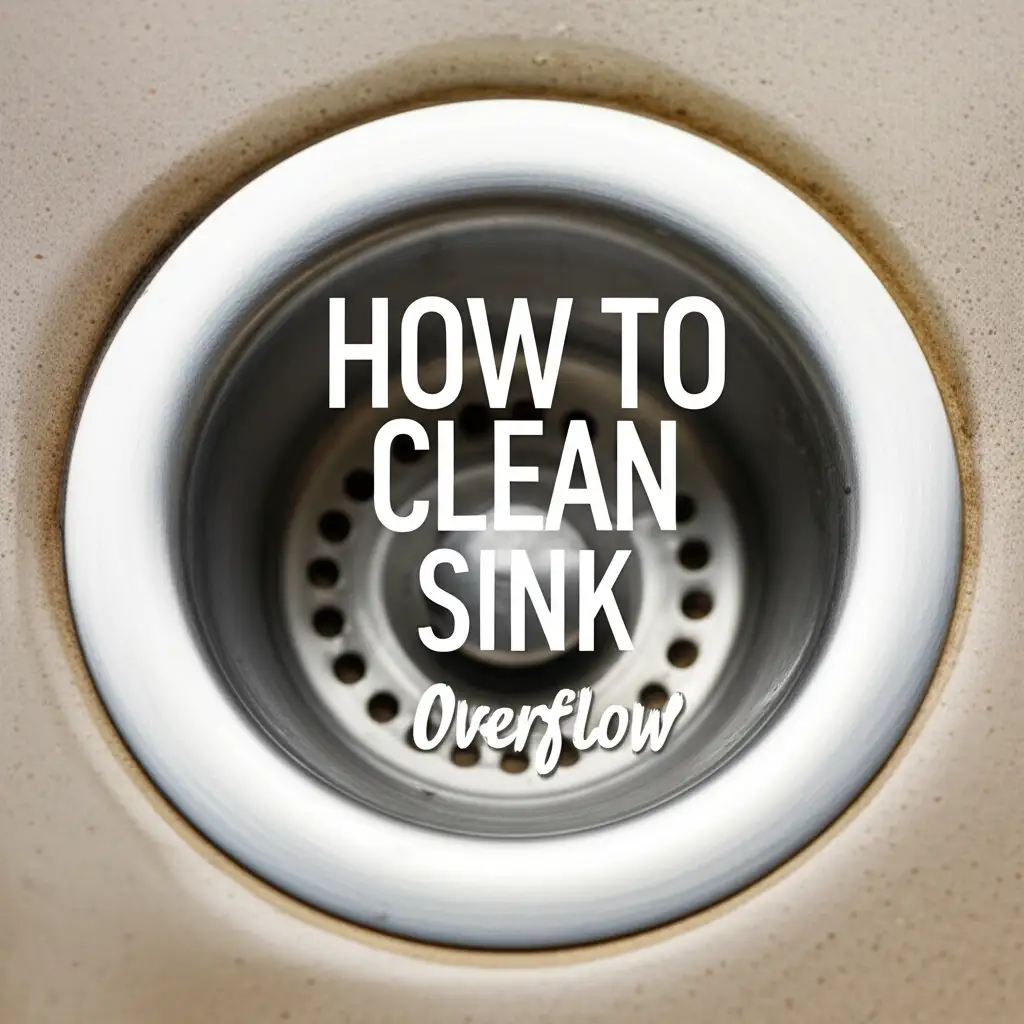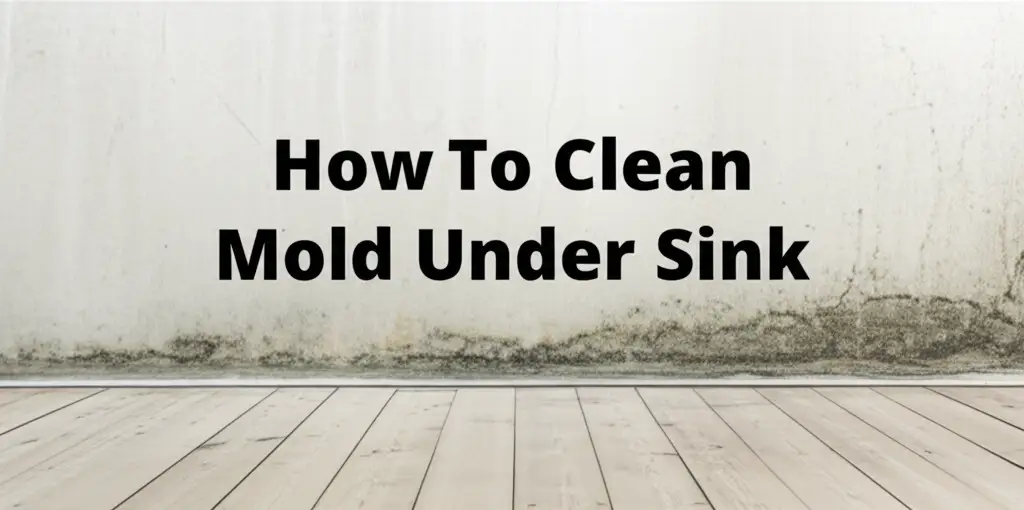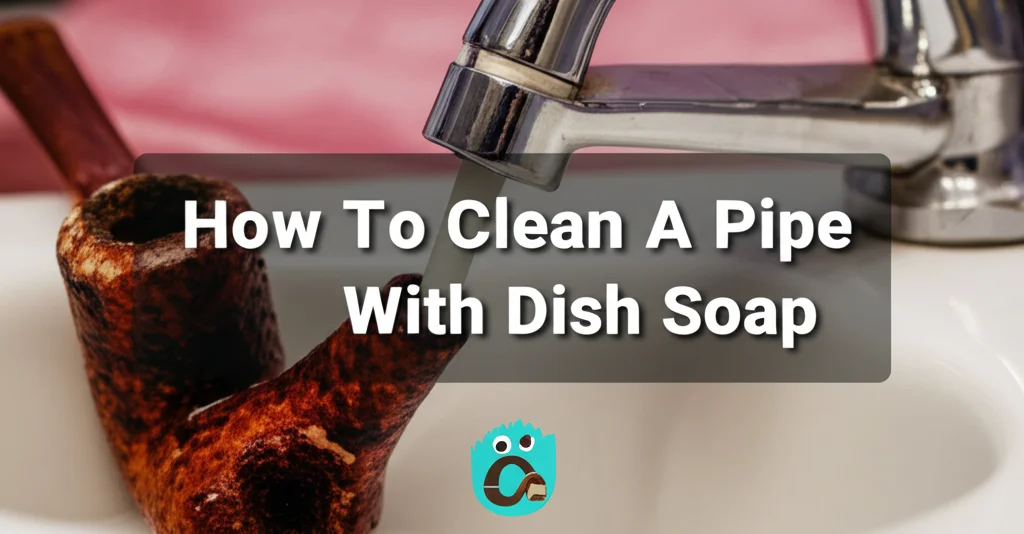· Home Cleaning · 15 min read
How To Clean Sink Overflow

Mastering How to Clean Sink Overflow for a Pristine Drain
Have you ever noticed unpleasant odors coming from your bathroom or kitchen sink, even after cleaning the basin? The culprit often hides in a less obvious place: the sink overflow. This small, often forgotten opening plays a big role in preventing floods, but it also becomes a breeding ground for mold, mildew, and grime over time. Learning how to clean sink overflow channels is essential for a truly hygienic home.
Neglecting this area leads to persistent smells, slow drainage, and unhealthy bacterial buildup. A clean overflow ensures your sink functions properly and stays fresh. This article provides a complete guide.
We will explore why cleaning the overflow matters, gather necessary tools, outline effective cleaning methods using natural and chemical solutions, and offer tips for ongoing maintenance. Get ready to banish those stubborn sink odors and enjoy a cleaner living space.
Takeaway
Keeping your sink overflow clean is simple and crucial for home hygiene.
- Regularly clean the overflow to prevent odors and gunk buildup.
- Use natural solutions like baking soda and vinegar for effective cleaning.
- Employ a thin brush or pipe cleaner to dislodge debris.
- Flush the channel thoroughly with hot water.
- Implement preventative habits to maintain cleanliness.
To effectively clean a sink overflow, begin by removing any visible debris. Pour a mixture of baking soda and vinegar into the overflow opening, allowing it to fizz and break down grime. Follow this with a thorough flush of hot water to rinse away all loosened particles. Use a small, flexible brush or pipe cleaner to scrub the internal channel, ensuring all buildup is dislodged.
Understanding Your Sink Overflow: Why It Needs Cleaning
The sink overflow hole is a small opening, usually found near the top rim of your sink basin. Its main job is to act as a safety drain. If the faucet is left running and the main drain gets blocked, water flows into this hole instead of spilling onto your floor. This simple feature prevents water damage and costly repairs.
However, water and soap residue constantly flow through this channel. Over time, hair, soap scum, toothpaste, and other debris get trapped inside. This creates a damp, dark environment, perfect for mold and mildew to grow. You might notice black gunk or a foul smell coming from the overflow. This indicates a buildup of organic matter and bacteria.
Cleaning this area is vital for several reasons. First, it eliminates unpleasant odors that can permeate your bathroom or kitchen. Second, it prevents significant blockages in the overflow channel itself, ensuring it works correctly during an emergency. Third, it improves the overall hygiene of your sink area. A dirty overflow contributes to an unclean environment, even if the rest of your sink shines. Regular cleaning protects your home and promotes a healthier living space.
Gathering Your Tools: Essential Supplies for Overflow Cleaning
Before you start cleaning your sink overflow, gather all necessary items. Having everything ready makes the process smoother and more efficient. Most of these tools are common household items, so you likely already own them.
Here is a list of what you will need:
- Baking Soda: This is a gentle abrasive and deodorizer. It works well to break down grime.
- White Vinegar: An acidic cleaner, white vinegar reacts with baking soda to create a fizzing action. This helps loosen stubborn buildup.
- Hot Water: Hot water helps dissolve grease and soap scum. It also flushes away loosened debris.
- Small Bristle Brush or Pipe Cleaner: A specialized brush or a long, flexible pipe cleaner is essential. These tools reach into the narrow overflow channel. They dislodge physical blockages and scrub the interior surfaces. A sink aerator brush might work for some larger overflow holes, but a thinner brush is often better.
- Small Funnel (Optional): A funnel helps direct liquids precisely into the small overflow hole. This reduces spills.
- Screwdriver (Optional): Some overflow covers are removable with a simple screw. Removing the cover allows for deeper cleaning.
- Old Towels or Rags: Keep these handy to wipe up spills and clean the surrounding sink area.
- Protective Gloves: Always wear gloves to protect your hands from cleaning solutions and grime.
- Bucket (Optional): If you plan to remove the overflow cover and internal components, a bucket can catch any water or debris.
Having these items prepared ensures you can tackle the cleaning job effectively. You can achieve excellent results with simple, readily available supplies.
Initial Steps: Preparing Your Sink for Overflow Cleaning
Proper preparation makes the cleaning process easier and safer. Before you begin scrubbing the overflow, take a few moments to set up your work area. This ensures you can focus on the task without interruptions.
First, clear the sink basin. Remove any dishes, sponges, or other items from the sink. This gives you full access to the overflow hole and prevents anything from getting in the way. Wipe down the main sink basin with a general cleaner to remove surface dirt. This prevents dirt from washing into the overflow during cleaning. For example, if you have a stainless steel sink, give it a quick wipe.
Next, decide if you will remove the overflow cover. Many sink overflows have a decorative cover. This cover often snaps on or is held by a small screw. If you see a screw, use a screwdriver to carefully loosen and remove it. If it snaps on, gently pry it off. Removing the cover gives you better access to the inside of the overflow channel. This allows for a more thorough cleaning. Be careful not to damage the cover or the sink.
Once the sink is clear and the cover is off (if applicable), place an old towel or rag beneath the overflow area. This will catch any drips or spills during the cleaning process. Ensure good ventilation in the room. Open a window or turn on a fan. This helps disperse any odors from the grime or cleaning solutions. By taking these initial steps, you create a clean and safe environment for tackling the sink overflow.
Effective Cleaning Methods for Sink Overflows: DIY Solutions
Cleaning your sink overflow does not require harsh chemicals. Many effective solutions use common household items. These methods are safe, economical, and produce excellent results.
Natural Cleaning Method: Baking Soda and Vinegar
This is one of the most popular and effective DIY cleaning methods. Baking soda and vinegar create a chemical reaction that helps break down buildup.
- Preparation: Clear the sink. Ensure the overflow cover is removed if possible.
- Apply Baking Soda: Pour about half a cup of baking soda directly into the overflow hole. Use a small funnel if the opening is tiny. Try to get as much baking soda as possible down the channel.
- Add Vinegar: Slowly pour one cup of white vinegar into the overflow hole. You will hear a fizzing sound. This is the chemical reaction working to loosen grime. The vinegar also deodorizes.
- Wait: Let the mixture sit and work for at least 30 minutes, or even a few hours for stubborn buildup. The longer it sits, the more effective it will be.
- Scrub (Optional but Recommended): After waiting, use a thin bristle brush or a pipe cleaner. Gently push it into the overflow channel. Move it back and forth to dislodge any remaining gunk. This physical scrubbing action is key for thorough cleaning. This is similar to how you might clean a sink drain with vinegar.
- Flush with Hot Water: Boil a pot of water. Carefully pour the hot water down the overflow hole. This flushes away all the loosened debris, baking soda, and vinegar. Repeat this step if necessary until the water runs clear.
Dish Soap and Hot Water Method
For lighter buildup, dish soap can be surprisingly effective.
- Mix Solution: Mix a few drops of dish soap with a cup of very hot water.
- Pour: Slowly pour this soapy hot water mixture down the overflow hole.
- Scrub: Use your thin bristle brush or pipe cleaner to scrub the inside of the channel. The soap helps cut through grease and grime.
- Rinse: Flush thoroughly with plain hot water.
These DIY methods are often enough for regular maintenance and minor blockages. They avoid harsh chemicals, making them safer for your pipes and the environment.
Deep Cleaning and Disinfection: Ensuring Lasting Freshness
Sometimes, the natural methods need a little boost, especially if your sink overflow has years of accumulated grime or a strong, persistent odor. Deep cleaning focuses on disinfecting the channel and removing the toughest buildup.
Using a Flexible Drain Brush or Plumbing Snake
For truly stubborn clogs or black gunk, a specialized tool is invaluable.
- Insert Brush: Get a flexible drain brush, often called an overflow brush or pipe cleaner. These brushes have long, thin handles with bristles at the end. Gently push the brush into the overflow hole.
- Twist and Push: Twist the brush and push it deeper into the channel. The bristles will scrape against the inner walls, dislodging soap scum, hair, and mold.
- Extract Debris: Slowly pull the brush out, bringing any loosened debris with it. You might be surprised by the amount of gunk that comes out. Wipe the brush clean after each extraction.
- Repeat and Flush: Repeat this process several times until no more debris comes out. Then, flush the overflow thoroughly with hot water. Consider following up with a baking soda and vinegar treatment for a final clean and deodorize.
Disinfection for Odor Elimination
If foul odors persist, disinfection is crucial. Mold and bacteria cause these smells.
- Bleach Solution (Use with Caution): Mix 1/4 cup of bleach with 1 cup of water. Never mix bleach with vinegar or other cleaners. Pour this solution very slowly and carefully into the overflow hole. Let it sit for 15-20 minutes. The bleach will kill bacteria and mold.
- Hydrogen Peroxide: As an alternative to bleach, hydrogen peroxide is a milder disinfectant. Pour 1/2 cup of 3% hydrogen peroxide into the overflow. Let it sit for 30 minutes. It helps break down organic matter and kills germs.
- Flush Thoroughly: After using any disinfectant, it is critical to flush the overflow channel with plenty of hot water. This rinses away all chemical residues and dislodged gunk. Ensure the area is well-ventilated during and after this process.
Deep cleaning ensures not just a visually clean overflow but one that is free from harmful microorganisms and unpleasant smells. This creates a healthier environment. If you have noticed mold under your sink, a thorough cleaning of the overflow area can help prevent its return.
Preventative Maintenance: Keeping Your Sink Overflow Clean
Maintaining a clean sink overflow is much easier than tackling a severely clogged or smelly one. Regular preventative measures keep grime from building up in the first place. Incorporating these habits into your routine saves you time and effort in the long run.
Regular Flushing
The simplest preventative step is regular flushing. Once a week, pour a kettle of hot water down the overflow hole. Hot water helps melt away grease and soap residue before they can harden and create blockages. This simple action disrupts the accumulation process.
Weekly Baking Soda and Vinegar Boost
A weekly or bi-weekly treatment with baking soda and vinegar can keep the overflow channel fresh.
- Add Baking Soda: Pour 1/4 cup of baking soda into the overflow opening.
- Follow with Vinegar: Slowly add 1/2 cup of white vinegar.
- Let Sit: Allow the mixture to fizz for 15-20 minutes.
- Flush: Rinse thoroughly with hot water.
This routine actively breaks down minor buildup and deodorizes the channel, preventing odors before they start.
Using Drain Screens
While drain screens primarily protect the main drain, they indirectly help the overflow. By catching hair and larger debris before they enter the sink, fewer particles are likely to be splashed into the overflow channel. This reduces the amount of organic matter available to accumulate there.
Wiping Down the Overflow Exterior
Regularly wipe the exterior of the overflow cover and the surrounding sink area. Use an all-purpose cleaner and a cloth. This prevents surface grime from washing into the hole during daily use. If you clean your sink faucet, take an extra second to wipe down the overflow area too.
Avoid Pouring Grease Down the Sink
Never pour cooking grease down any sink drain, including near the overflow. Grease solidifies as it cools, sticking to pipe walls and the overflow channel. This creates a sticky trap for hair and other debris, leading to stubborn clogs and unpleasant odors. Scrape grease into the trash or a disposable container instead.
By following these preventative tips, you can ensure your sink overflow remains clean, odor-free, and functional. Regular attention means less intense cleaning jobs in the future.
When to Call a Professional: Recognizing Serious Overflow Issues
While DIY methods work for most sink overflow problems, some situations require professional help. Recognizing these signs can save you from bigger plumbing issues and costly repairs. Do not hesitate to call a licensed plumber if you encounter any of these serious issues.
Persistent Clogs
You have tried multiple DIY cleaning methods: baking soda and vinegar, drain brushes, even commercial drain cleaners. Yet, the overflow remains stubbornly blocked. Water backs up through the overflow when the main drain is plugged. This indicates a deep or severe clog that your tools cannot reach. A plumber has specialized equipment like motorized drain snakes and cameras to identify and remove such blockages effectively.
Foul Odors That Do Not Go Away
You have cleaned, disinfected, and flushed the overflow repeatedly, but a strong, sewage-like smell persists. This might signal a deeper issue in your plumbing system. The odor could be coming from the main drain line or even a sewer gas leak. A plumber can diagnose the source of the smell and address the underlying problem.
Leaks or Water Damage
If you notice water leaking from the overflow channel when the sink is full, or worse, water pooling under the sink near the overflow pipe connection, it is a serious problem. This indicates a damaged or disconnected overflow pipe. These leaks can cause significant water damage to your cabinets, flooring, and even lead to mold growth under the sink. DIY fixes are generally not suitable for plumbing leaks. You need a professional to repair or replace the compromised sections.
Visible Pipe Damage
During your cleaning efforts, you might spot cracks, corrosion, or other damage to the visible parts of the overflow pipe. Any structural integrity issues mean the pipe needs professional assessment. Continuing to use a damaged pipe can lead to leaks and further damage.
A plumber can quickly assess the situation, accurately diagnose the problem, and perform the necessary repairs. Attempting complex plumbing repairs yourself without proper knowledge or tools can often worsen the problem. Prioritizing your home’s integrity and your peace of mind is important.
Frequently Asked Questions (FAQ)
Q1: Why does my sink overflow smell bad even after cleaning the drain?
Your sink overflow often smells bad because it accumulates soap scum, hair, and mold. The main drain gets cleaned, but the overflow channel remains neglected. This dark, damp area is perfect for bacteria and mildew to grow. These microorganisms create foul odors. Regular dedicated cleaning of the overflow area is essential to eliminate these persistent smells completely.
Q2: How often should I clean my sink overflow?
You should clean your sink overflow every one to two months for optimal hygiene. If you notice a persistent smell or slow drainage from the overflow, clean it more often. Regular maintenance, such as flushing with hot water weekly, can also help prevent heavy buildup. Consistent cleaning prevents serious clogs and bad odors.
Q3: Can I use chemical drain cleaners in the sink overflow?
Using chemical drain cleaners in the sink overflow is generally not recommended. These chemicals can be corrosive and potentially damage the overflow pipe, especially if it is made of plastic. They also release harsh fumes. Natural solutions like baking soda and vinegar are safer and effective for most clogs and odors in the overflow channel.
Q4: What causes black gunk to come out of the sink overflow?
Black gunk coming out of your sink overflow is typically a mixture of mold, mildew, bacteria, and accumulated debris. This includes soap scum, toothpaste residue, hair, and skin flakes. The damp, dark environment inside the overflow pipe provides ideal conditions for these microorganisms to thrive, forming the slimy black buildup you see.
Q5: Is it possible to remove the overflow cover for better cleaning?
Yes, it is often possible to remove the overflow cover for better cleaning access. Many covers are either held on by a small screw, which can be removed with a screwdriver, or they simply snap into place and can be gently pried off. Removing the cover allows you to more easily scrub the inside of the overflow channel and ensure a thorough cleaning.
Conclusion
Cleaning your sink overflow is a simple yet vital task often overlooked in routine home maintenance. By understanding its purpose and the grime it collects, you can effectively tackle odors and prevent blockages. We explored various methods, from natural solutions like baking soda and vinegar to deep cleaning with specialized brushes. Remember, regular maintenance is key to preventing stubborn buildup and unpleasant smells.
A clean sink overflow contributes to a healthier, fresher living environment. It ensures your sink functions properly and prevents potential water damage. Do not let this small opening become a hidden source of grime and odors. Make cleaning your sink overflow a regular part of your home hygiene routine. Take action today and enjoy the benefits of a truly pristine sink. Your nose, your sink, and your home will thank you!
- sink overflow cleaning
- drain cleaning
- plumbing maintenance
- prevent clogs
- bathroom cleaning
- kitchen cleaning




